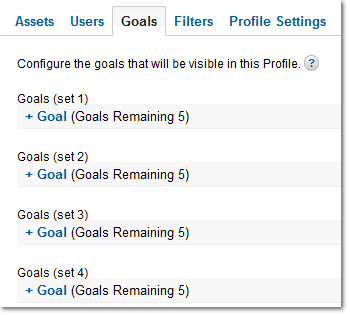 When it comes to setting goals it is important to separate big picture from ongoing day to day. Two of the most common marketing goals for the upcoming year may be to increase traffic to the website or increase sales. This post is about identifying several types of marketing goals that might work for you and how to measure them so that you have meaningful information moving forward.
When it comes to setting goals it is important to separate big picture from ongoing day to day. Two of the most common marketing goals for the upcoming year may be to increase traffic to the website or increase sales. This post is about identifying several types of marketing goals that might work for you and how to measure them so that you have meaningful information moving forward.
If your marketing goal is to get more traffic or increase your sales, then you might be struggling with how to go about doing that. When your goals are broad and unspecified, it is almost impossible to apply targeted tactics. Increase which traffic? Where do my sales come from?
Step 1: Identify your traffic sources. Not all traffic is created equal. Referring to our recent post on Google Analytics for Small Business, delve into your analytics and identify what your main traffic sources are. The basic sources are Search Engines (organic and paid), Referrer and Direct. Search engine organic is exactly that, organic traffic. (Well, almost. Various other types of traffic can be listed as organic but for the purpose of this post, we’ll assume the bulk of the traffic listed under organic is organic.) Referrer traffic will be any sources sending you traffic such as other other websites that are linking to you. Direct traffic is typically brand related and mainly made up of those searchers typing your URL directly or using a bookmark. Again there are exceptions to all sources but those are not part of this post.
 Step 2: Identify your most valuable traffic source. This source may not necessarily be the one sending you the most traffic. But how do you tell? Ideally, the most valuable traffic source will be the one that sends the most qualified traffic. Identifying what qualified means to your business is the same as identifying your Key Success Metrics or Key Performance Indicators (KPI’s). Here are some basic ways to measure traffic quality.
Step 2: Identify your most valuable traffic source. This source may not necessarily be the one sending you the most traffic. But how do you tell? Ideally, the most valuable traffic source will be the one that sends the most qualified traffic. Identifying what qualified means to your business is the same as identifying your Key Success Metrics or Key Performance Indicators (KPI’s). Here are some basic ways to measure traffic quality.
Set up Goals in Analytics. Google Analytics provides you with the opportunity to set up Goals. A goal is a type of behaviour exhibited by a visitor that you consider valuable. For example: If your average visitor visits 3 pages, then visitors that view 4 or more pages on average are likely to be more interested in your product or service. If you offer a downloadable PDF or a guide or have a newsletter sign up, then those visitors that complete one of those actions would be considered more qualified than a visitor that only visited one page and then left.
Identify what success looks like for your website and set up some goals. You have a limit of 20 goals, 4 sets of 5. Spend some time planning what your goals will be. Don’t get caught up filling in all 20 goals just because they are there. Think about your most important goals (macro conversions) and group them together. Secondary goals (micro conversions) should be in a different set.
Step 3: Review, Adjust, Repeat. If after a month (or whatever time period gives you enough data) of having goals tracked on your website, it is clear that your listing on hellobc.com for example is sending the highest quality traffic and your PPC advertising has netted zero return, you are better able to adjust your marketing spend or tactics to respond. Be cautious in making too quick of a decision. Ensure you have sufficient data to analyze and look at the entire picture not just one piece. It may not be that your PPC advertising is wrong place to invest marketing dollars, it may be that the landing page you are sending people to is not converting. There are always multiple touch points in the conversion funnel and a bottleneck at any one of them will affect the final conversion. (TIP: the last touch point may not have been the only one. Just because the visitor who came through Google organic made a purchase, it doesn’t mean that they didn’t see the product first in a paid online ad a week earlier, visit the site, go away for a few days and do some comparison shopping and then return to make the purchase. Does paid advertising deserve some credit for that sale? You bet. Stay tuned for more on this topic.)
At the end of the day, the sooner you start tracking visitor behaviour, the sooner you will be able to make informed tactical marketing decisions. This is one of the simplest and yet most powerful features to take advantage of in Google Analytics.